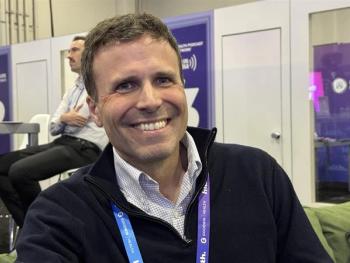
America is facing a shortage of doctors and it could get worse
The nation needs more physicians to improve health equity. Addressing the shortage requires offering more support for women and aspiring doctors from minority groups.
America needs more doctors, and a more diverse pool of doctors, to combat inequities in health outcomes.
That’s the perspective of Michael Dill, director of workforce studies for the Association of American Medical Colleges. Earlier this month, Dill outlined the state of the nation’s physician workforce during a session of AAMC’s annual conference.
“Everything, everything, links back to shortages,” Dill said.
While there is an uptick in medical school graduates, it’s not keeping pace with America’s aging population or the number of doctors projected to retire in the next decade. Over the next decade, more than one out of three doctors are planning to retire, Dill projected.
By 2034, America should expect a shortage of between 37,800 and 124,000 physicians, he projected. Congress is considering legislation which would offer more federal aid for graduate medical education, and advocates for healthcare are hoping that wins approval.
Dill outlined several trends to watch concerning the physician workforce.
Equity
When looking at the need for more doctors, Dill framed it as an equity issue and pointed out how some underserved areas have fewer doctors.
If all Americans were white, insured and suburban, America would need 50,000 more primary care doctors and 130,000 more specialty physicians, Dill projected.
“Not having enough physicians is, in fact, an equity issue,” he said.
More diverse doctors
Part of addressing that is developing a more diverse workforce. There is some progress, as nearly half of all recent medical school graduates come from minority groups. Here’s a snapshot of the 2019-20 medical school graduates.
- White: 52.9%
- Asian: 22.1%
- Black: 6.6%
- Latino: 5.9%
Dill spoke about the need for diversity in a host of areas, including training more physicians with disabilities. While progress is being made, Dill said much can be done.
“The way we’re going is not going to get us to where we need to be,” Dill said.
“Clearly, we’ve got some work to do.”
On Monday, Vice President Kamala Harris announced the federal government is investing
COVID-19 impact
The coronavirus pandemic took its toll on the physician workforce. Some physicians in private practice ended up shutting their doors.
Nationwide, 8% of all doctors permanently closed their practices. While that may seem like a small number, Dill said that’s about 16,000 private practices that are no longer serving patients.
“Small practices actually didn’t get hit as hard as I feared they would, but they still got hit pretty hard,” Dill said.
Burnout
Even before the emergence of COVID-19, surveys showed 40% of America’s doctors said they felt burnout at least once a week.
“COVID is not making that any better,” Dill said.
Women physicians in particular are enduring the brunt of the impact and need more support at the workplace. Women doctors are more likely to be managing child care responsibilities than men.
“It’s disproportionately negatively impacted … the careers and work trajectories of women physicians,” Dill said of the pandemic.
Women account for one-third of the physician workforce. But Dill noted that 40% of women doctors go part-time or leave medicine within six years of completing their residency.
“If we want to address the shortage, we need to support women,” Dill said.
“Gender equity and the physician workforce shortage are linked.”
Telehealth rising
Since the emergence of the COVID-19 pandemic, telehealth usage has surged. In the spring of 2020, telehealth visits peaked at around 400,000. By the end of the year, the number had dropped somewhat, but there were still nearly 300,000 telehealth appointments.
Still, people continue to want to see doctors in person, Dill said.
“Telehealth has carved out a territory for itself and it doesn’t appear to be going away, but in-person still remains the dominant mode of healthcare provision,” Dill said.






































